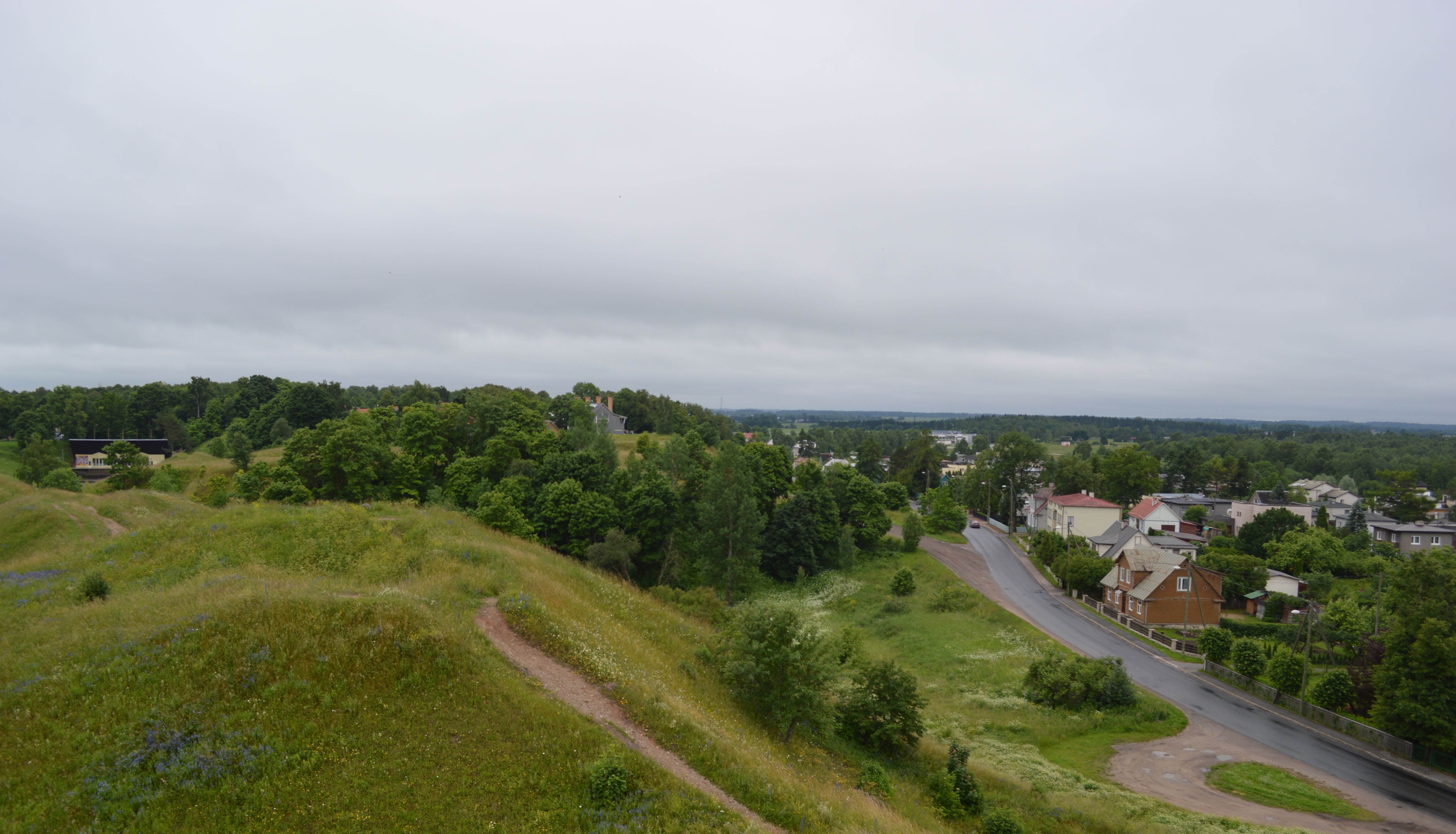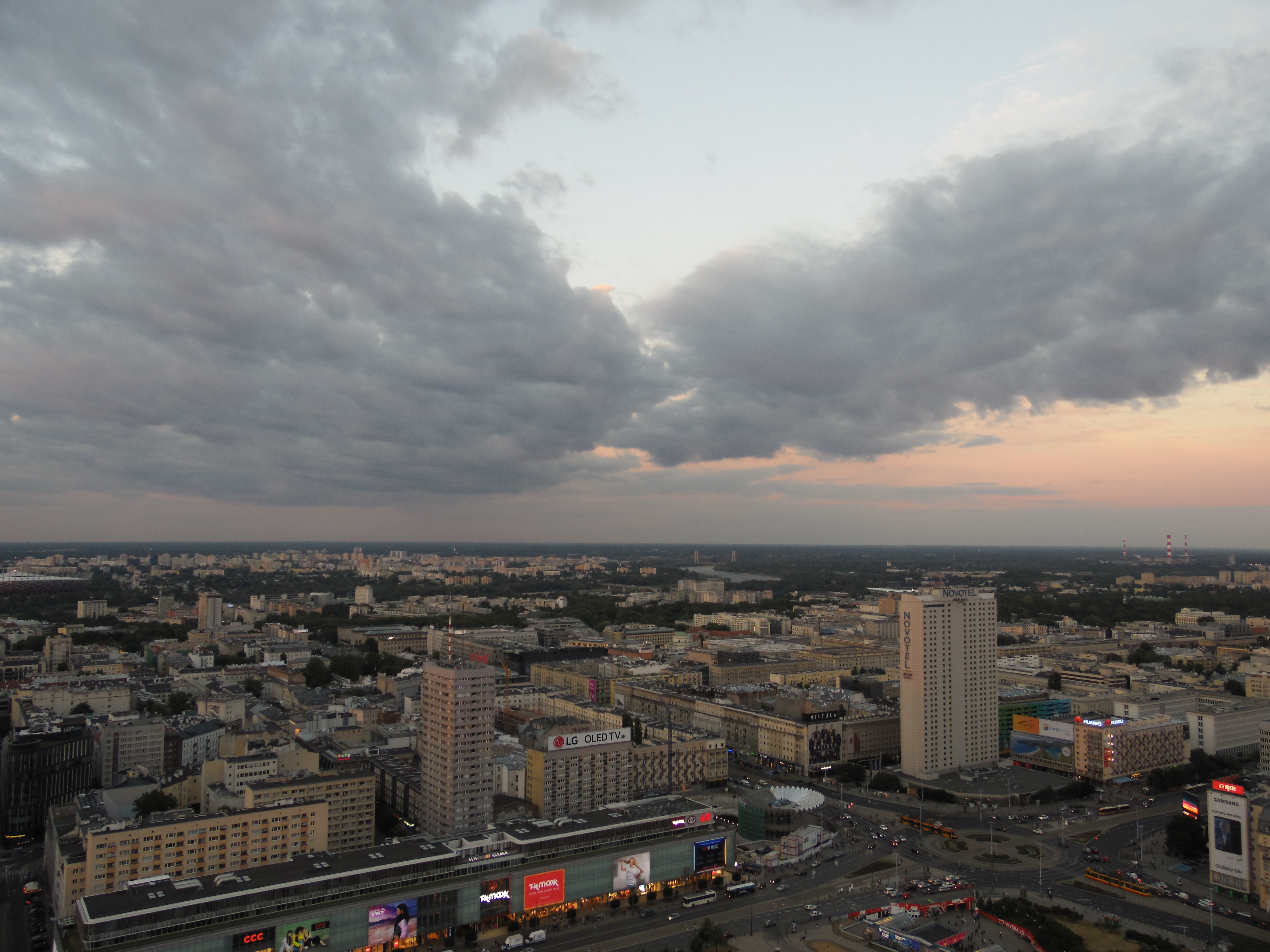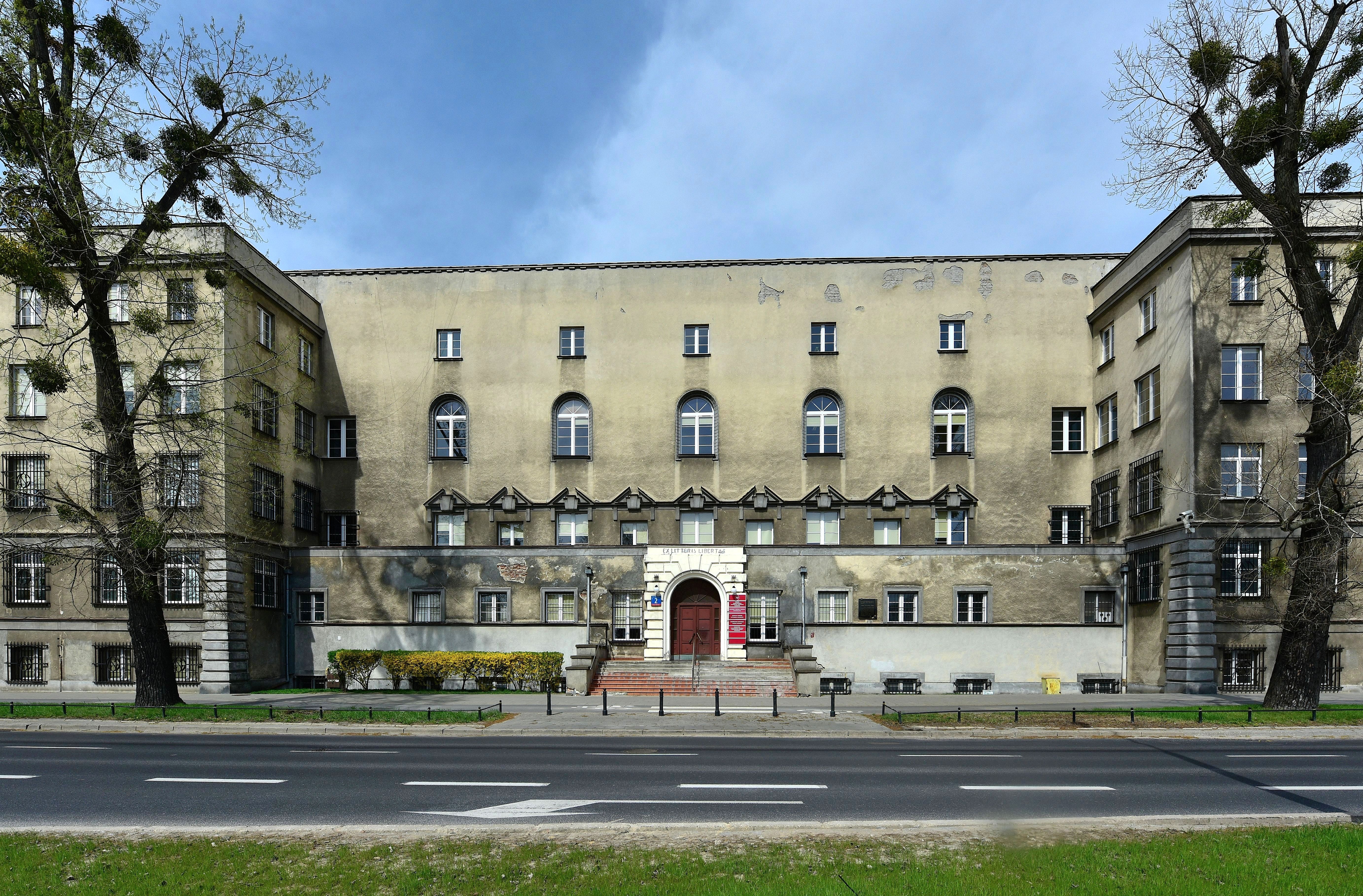|
Stanisław Herbst
Stanisław Herbst (né Chrobot; 12 July 1907, Rakvere, Russian Empire (modern-day Estonia) – 24 June 1973, Warsaw) was a Polish historian, researcher of modern history, and military historian. He was a professor at the University of Warsaw and the Dzerzhinsky Political-Military Academy in Warsaw, and was also the president of the Polish Historical Society. Pupils of his included Zdzisław Spieralski and Tomasz Strzembosz. Biography Herbst was born in Rakvere, Russian Empire (now Estonia), the son of Wacław Chrobot, a banker and artillery lieutenant, and Maria of Nowohoński (from landed nobility). He attended the Stefan Batory Gymnasium and Lyceum in Warsaw. After graduating in 1926, he undertook studies in history and art history at the University of Warsaw. His lecturers included Henryk Mościcki, Wacław Tokarz and Oskar Halecki, under whose supervision he defended his PhD in 1931 (based on the work War of Livonia, 1600–1602). From 1933 to 1934, he taught history ... [...More Info...] [...Related Items...] OR: [Wikipedia] [Google] [Baidu] |
Rakvere
Rakvere is a town in northern Estonia and the administrative centre of the Lääne-Viru ''maakond'' (county), 20 km south of the Gulf of Finland of the Baltic Sea. Rakvere is the 8th most populous urban area in Estonia. Rakvere has a total area of 10.75 square kilometres, and although about 15% of it is covered by forest, the city is still populated so densely as to make it the third most densely populated city in Estonia. From the 13th century until the early 20th century, Rakvere was more widely known by its historical German name, ''Wesenberg(h)''. History The earliest signs of human settlement dating back to the 3rd–5th centuries AD have been found on the present theatre hill. Probably to protect that settlement, a wooden stronghold was built on the present-day Vallimägi. Soon after the kingdom of Denmark had conquered northern Estonia, in 1220, the new rulers started to erect stone buildings. A settlement called ''Tarvanpea'' was first mentioned in the Chronicle ... [...More Info...] [...Related Items...] OR: [Wikipedia] [Google] [Baidu] |
National Library Of Poland
The National Library ( pl, Biblioteka Narodowa) is the central Polish library, subject directly to the Ministry of Culture and National Heritage of the Republic of Poland. The library collects books, journals, electronic and audiovisual publications published in the territory of Poland, as well as Polonica published abroad. It is the most important humanities research library, the main archive of Polish writing and the state centre of bibliographic information about books. It also plays a significant role as a research facility and is an important methodological center for other Polish libraries. The National Library was one of the first libraries in Europe that fulfilled the tasks of a modern national library in developing collections covering the entire body of Polish literature and making available to the public. Literature and making those works accessible to the public receives a copy of every book published in Poland as legal deposit. The Jagiellonian Library is the only ... [...More Info...] [...Related Items...] OR: [Wikipedia] [Google] [Baidu] |
Gdańsk
Gdańsk ( , also ; ; csb, Gduńsk;Stefan Ramułt, ''Słownik języka pomorskiego, czyli kaszubskiego'', Kraków 1893, Gdańsk 2003, ISBN 83-87408-64-6. , Johann Georg Theodor Grässe, ''Orbis latinus oder Verzeichniss der lateinischen Benennungen der bekanntesten Städte etc., Meere, Seen, Berge und Flüsse in allen Theilen der Erde nebst einem deutsch-lateinischen Register derselben''. T. Ein Supplement zu jedem lateinischen und geographischen Wörterbuche. Dresden: G. Schönfeld’s Buchhandlung (C. A. Werner), 1861, p. 71, 237.); Stefan Ramułt, ''Słownik języka pomorskiego, czyli kaszubskiego'', Kraków 1893, Gdańsk 2003, ISBN 83-87408-64-6. * , )Johann Georg Theodor Grässe, ''Orbis latinus oder Verzeichniss der lateinischen Benennungen der bekanntesten Städte etc., Meere, Seen, Berge und Flüsse in allen Theilen der Erde nebst einem deutsch-lateinischen Register derselben''. T. Ein Supplement zu jedem lateinischen und geographischen Wörterbuche. Dresden: G. Schönf ... [...More Info...] [...Related Items...] OR: [Wikipedia] [Google] [Baidu] |
Białystok
Białystok is the largest city in northeastern Poland and the capital of the Podlaskie Voivodeship. It is the tenth-largest city in Poland, second in terms of population density, and thirteenth in area. Białystok is located in the Białystok Uplands of the Podlachian Plain on the banks of the Biała River, by road northeast of Warsaw. It has historically attracted migrants from elsewhere in Poland and beyond, particularly from Central and Eastern Europe. This is facilitated by the nearby border with Belarus also being the eastern border of the European Union, as well as the Schengen Area. The city and its adjacent municipalities constitute Metropolitan Białystok. The city has a warm summer continental climate, characterized by warm summers and long frosty winters. Forests are an important part of Białystok's character and occupy around (18% of the administrative area of the city) which places it as the fifth-most forested city in Poland. The first settlers arrived in t ... [...More Info...] [...Related Items...] OR: [Wikipedia] [Google] [Baidu] |
Warsaw Scientific Society
Warsaw Scientific Society (Polish: ''Towarzystwo Naukowe Warszawskie''; TNW) is a Polish scientific society based in Warsaw Warsaw ( pl, Warszawa, ), officially the Capital City of Warsaw,, abbreviation: ''m.st. Warszawa'' is the capital and largest city of Poland. The metropolis stands on the River Vistula in east-central Poland, and its population is officia .... It was established in 1907 as a continuation of the Society of Friends of Science to advance the sciences and arts and to publish scientific papers. External links Warsaw Scientific Society homepage Scientific societies based in Poland Scientific organizations established in 1907 1907 establishments in Poland {{sci-org-stub ... [...More Info...] [...Related Items...] OR: [Wikipedia] [Google] [Baidu] |
Jewish Historical Institute
The Jewish Historical Institute ( pl, Żydowski Instytut Historyczny or ''ŻIH''; yi, ייִדישער היסטאָרישער אינסטיטוט), also known as the Emanuel Ringelblum Jewish Historical Institute, is a public cultural and research institution in Warsaw, Poland, chiefly dealing with the history of Jews in Poland and Jewish culture. History The Jewish Historical Institute was created in 1947 as a continuation of the Central Jewish Historical Commission, founded in 1944. The Jewish Historical Institute Association is the corporate body responsible for the building and the institute's holdings. The Institute falls under the jurisdiction of the Ministry of Culture and National Heritage. In 2009 it was named after Emanuel Ringelblum and became a public cultural institution. The institute is a repository of documentary materials relating to the Jewish historical presence in Poland. It is also a centre for academic research, study and the dissemination of knowledge about t ... [...More Info...] [...Related Items...] OR: [Wikipedia] [Google] [Baidu] |
Polish Academy Of Sciences
The Polish Academy of Sciences ( pl, Polska Akademia Nauk, PAN) is a Polish state-sponsored institution of higher learning. Headquartered in Warsaw, it is responsible for spearheading the development of science across the country by a society of distinguished scholars and a network of research institutes. It was established in 1951, during the early period of the Polish People's Republic following World War II. History The Polish Academy of Sciences is a Polish state-sponsored institution of higher learning, headquartered in Warsaw, that was established by the merger of earlier science societies, including the Polish Academy of Learning (''Polska Akademia Umiejętności'', abbreviated ''PAU''), with its seat in Kraków, and the Warsaw Society of Friends of Learning (Science), which had been founded in the late 18th century. The Polish Academy of Sciences functions as a learned society acting through an elected assembly of leading scholars and research institutions. The Academy h ... [...More Info...] [...Related Items...] OR: [Wikipedia] [Google] [Baidu] |
Marszałkowska Street, Warsaw
Marszałkowska (''lit. Marshal Street'') is one of the main thoroughfares of Warsaw's city center. It links Bank Square in its north sector with ''Plac Unii Lubelskiej'' (Union of Lublin Square) in the south. History Contrary to a common urban legend that attributes the name to Marshal of Poland Józef Piłsudski, the street's name actually relates to 18th-century Grand Marshal of the Crown Franciszek Bieliński. Marszałkowska street was established by Franciszek Bieliński and opened in 1757. It was much shorter then, running only from Królewska Street to Widok Street. The street was almost entirely destroyed during the Warsaw Uprising of 1944. Rebuilding of Warsaw after World War II coincided with emergence of ''socialist realism Socialist realism is a style of idealized realistic art that was developed in the Soviet Union and was the official style in that country between 1932 and 1988, as well as in other socialist countries after World War II. Socialist realism is ... [...More Info...] [...Related Items...] OR: [Wikipedia] [Google] [Baidu] |
Free Polish University
Free Polish University ( pl, Wolna Wszechnica Polska), founded in 1918 in Warsaw, was a private high school with different departments: mathematics and natural sciences, humanities, political sciences and social pedagogy. From 1929, its degrees were equivalent to those of university. In the years 1919–1939 the institution employed 70–80 professors. In the academic year 1938/39 educated about 3000 students. The university conducted clandestine courses during the German occupation, but after the war, its activities were not resumed. :pl:Wolna Wszechnica Polska The university was disbanded in 1952. See also *Education in Poland * List of modern universities in Europe (1801–1945) The list of modern universities in Europe (1801–1940) contains all universities that were founded in Europe after the French Revolution and before the end of World War II. Universities are regarded as comprising all institutions of higher ed ... References Universities and colleges in ... [...More Info...] [...Related Items...] OR: [Wikipedia] [Google] [Baidu] |
Education In Poland During World War II
World War II saw the cultivation of underground education in Poland ( pl, Tajne szkolnictwo, or '). Secretly conducted education prepared scholars and workers for the postwar reconstruction of Poland and countered German and Soviet threats to eradicate Polish culture. Background: repressions of Polish education After the Polish defeat in the invasion of Poland of 1939 and the subsequent German and Soviet occupation of Polish territory, Poland was divided into the areas directly incorporated into the Reich, areas directly incorporated into the Soviet Union and the German-controlled General Government. According to Nazi racial theories the Slavs needed no higher education and the whole nation was to be turned into uneducated serfs for the German race. The only schools that remained opened were trade schools and courses for factory workers. [...More Info...] [...Related Items...] OR: [Wikipedia] [Google] [Baidu] |
Warsaw Ghetto
The Warsaw Ghetto (german: Warschauer Ghetto, officially , "Jewish Residential District in Warsaw"; pl, getto warszawskie) was the largest of the Nazi ghettos during World War II and the Holocaust. It was established in November 1940 by the German authorities within the new General Government territory of occupied Poland. At its height, as many as 460,000 Jews were imprisoned there, in an area of , with an average of 9.2 persons per room, barely subsisting on meager food rations. From the Warsaw Ghetto, Jews were deported to Nazi concentration camps and mass-killing centers. In the summer of 1942, at least 254,000 ghetto residents were sent to the Treblinka extermination camp during under the guise of "resettlement in the East" over the course of the summer. The ghetto was demolished by the Germans in May 1943 after the Warsaw Ghetto Uprising had temporarily halted the deportations. The total death toll among the prisoners of the ghetto is estimated to be at least 300,000 kill ... [...More Info...] [...Related Items...] OR: [Wikipedia] [Google] [Baidu] |
Home Army
The Home Army ( pl, Armia Krajowa, abbreviated AK; ) was the dominant resistance movement in German-occupied Poland during World War II. The Home Army was formed in February 1942 from the earlier Związek Walki Zbrojnej (Armed Resistance) established in the aftermath of the German and Soviet invasions in September 1939. Over the next two years, the Home Army absorbed most of the other Polish partisans and underground forces. Its allegiance was to the Polish government-in-exile in London, and it constituted the armed wing of what came to be known as the Polish Underground State. Estimates of the Home Army's 1944 strength range between 200,000 and 600,000. The latter number made the Home Army not only Poland's largest underground resistance movement but, along with Soviet and Yugoslav partisans, one of Europe's largest World War II underground movements. The Home Army sabotaged German transports bound for the Eastern Front in the Soviet Union, destroying German supplies and ty ... [...More Info...] [...Related Items...] OR: [Wikipedia] [Google] [Baidu] |


.jpeg/1200px-Brama_Zuraw_W_Gdansku_(153003103).jpeg)





